The image for the converging beam after refraction through the curved surface is formed at
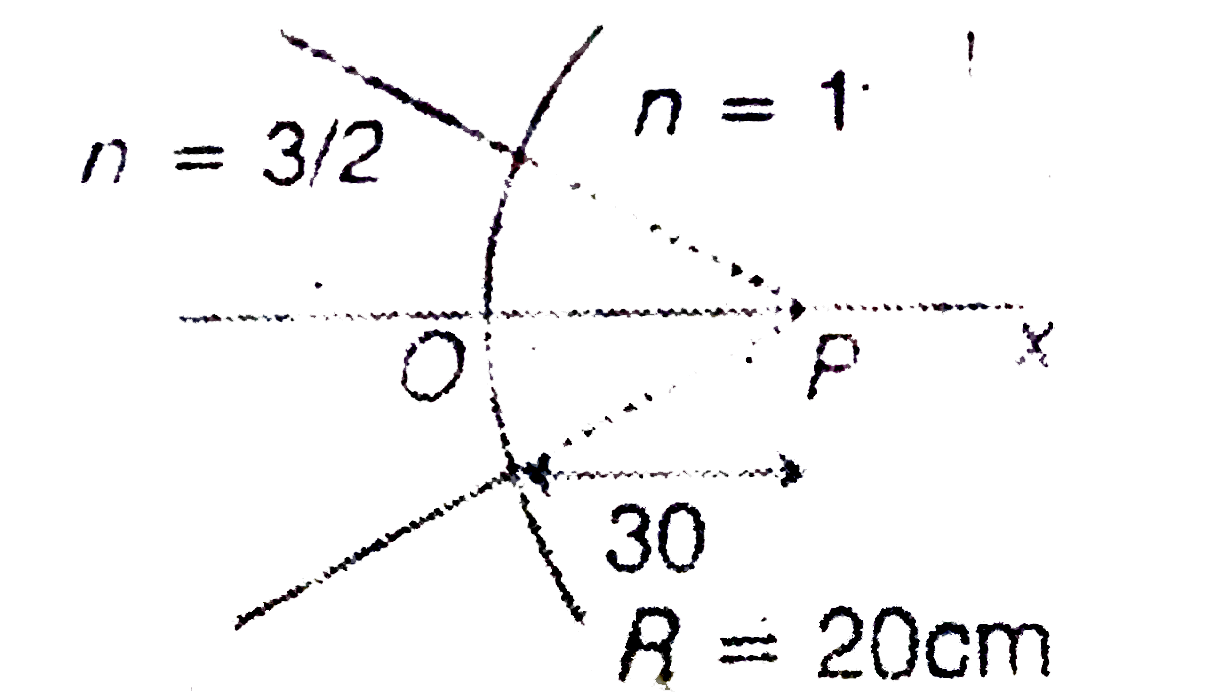
x=40 cm
x=403cm
x=−403cm
x=1807cm
The correct Answer is:A
1V−32×30=1−32+20,1V=−140+120=+140,V=40cm
Topper's Solved these Questions
Similar Questions
Figure shows a transparent hemisphere of radius 3.0 cm made of a material of refractive index 2.0. (a) A narrow beam of parallel rays is incident on the hemisphere as shown in the figure. Are the rays totally reflected at the plane surface ? (b) Find the image formed by the refraction at the first surface. (c) Find the image formed by the reflection or by the refraction at the plane surface. (d) Trace qualitatively the final rays as they come out of the hemisphere.

View SolutionAn extended object of size 2cm is placed at a distance of 10cm in air (n=1) form pole, on the other side of refracting surface has refractive index n=2. Find the positon, nature and size of image formed after single refraction through the curved surface.
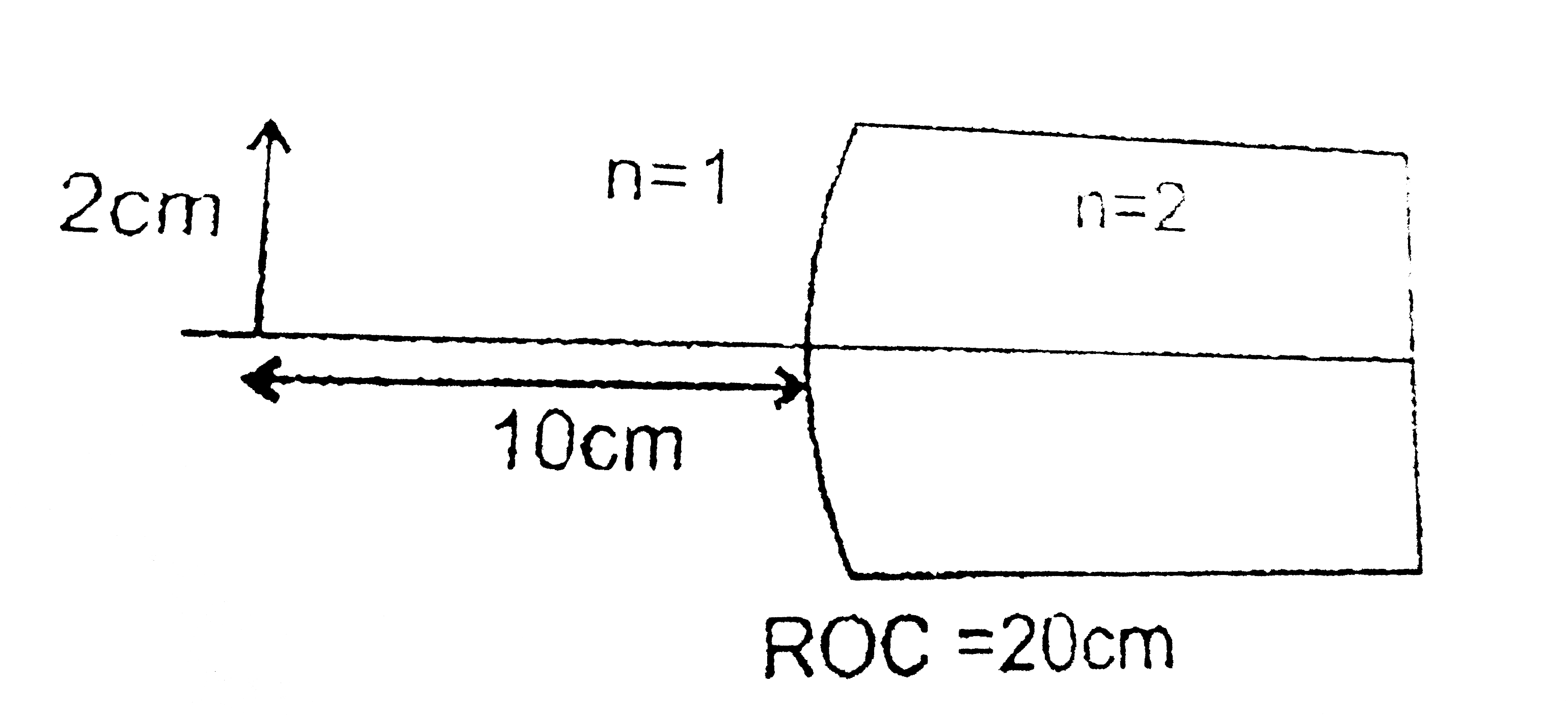
View Solution
A ray of light incident on one of the face of a prism as shown. After refraction through this surface ray is incident on base of the prism. The refractive index of the prism is √3. The net deviation of the ray due to prism is
View SolutionA block is released from rest from a height h=5m. After travelling through the smooth curved surface it moves on the rough horizontal surface through a length 1=8m and climbs onto the other smooth curved surface through a height h′. If μ=0.5, find h′.
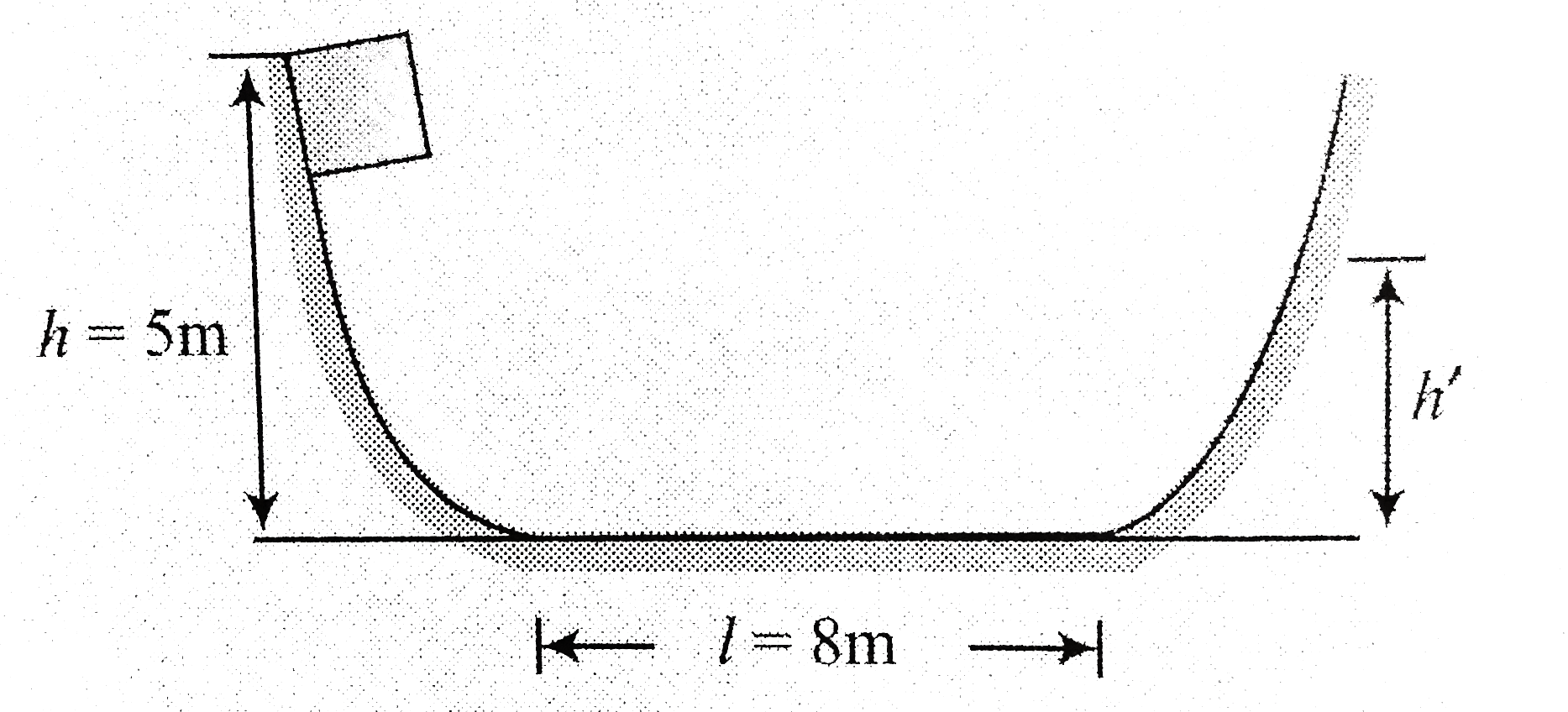
View SolutionIf final image after two refractions through the lens and one reflection from the mirror forms at the same point O. Refrative index of the material of the lens μ=3/2. Then find d.
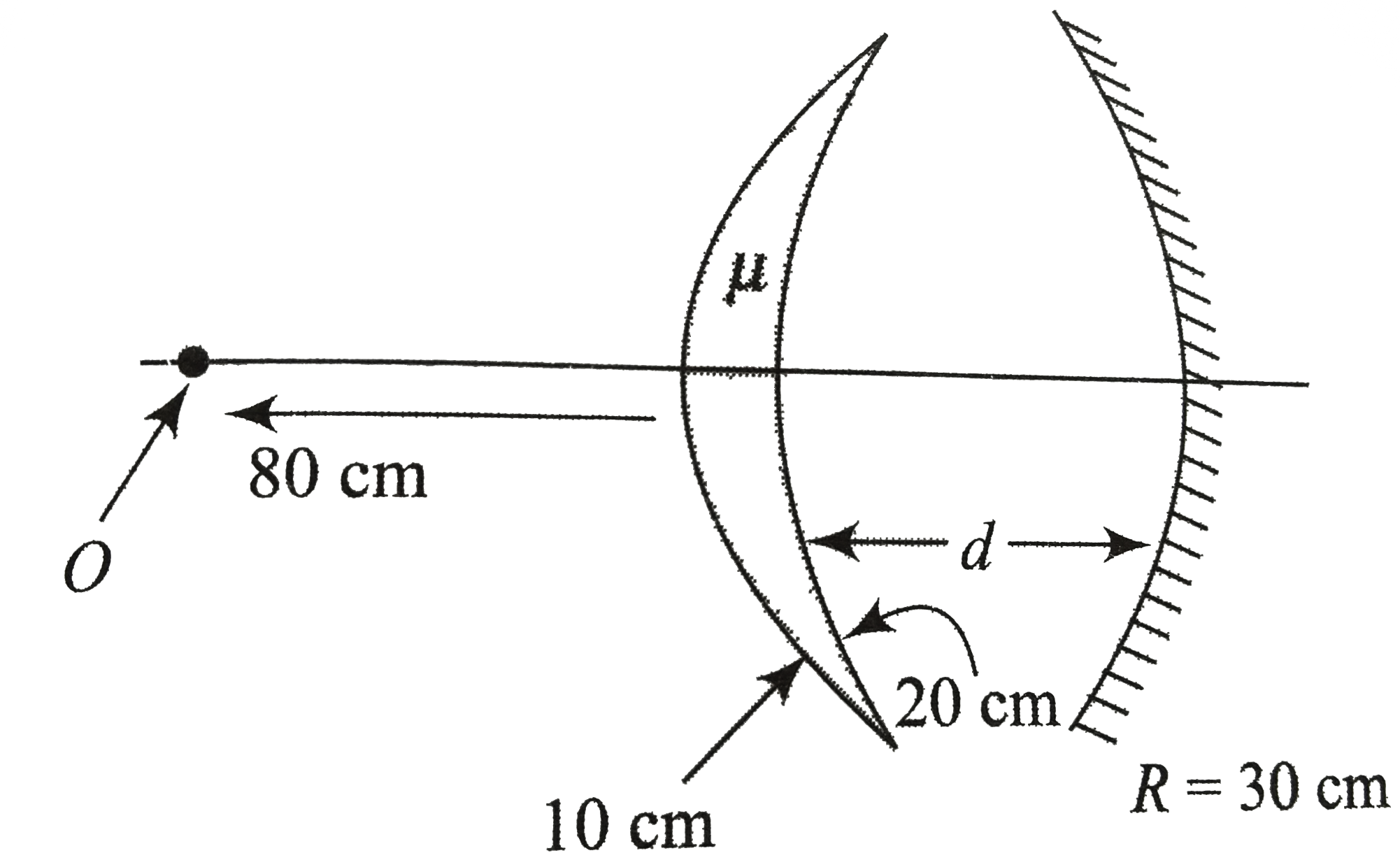
View Solution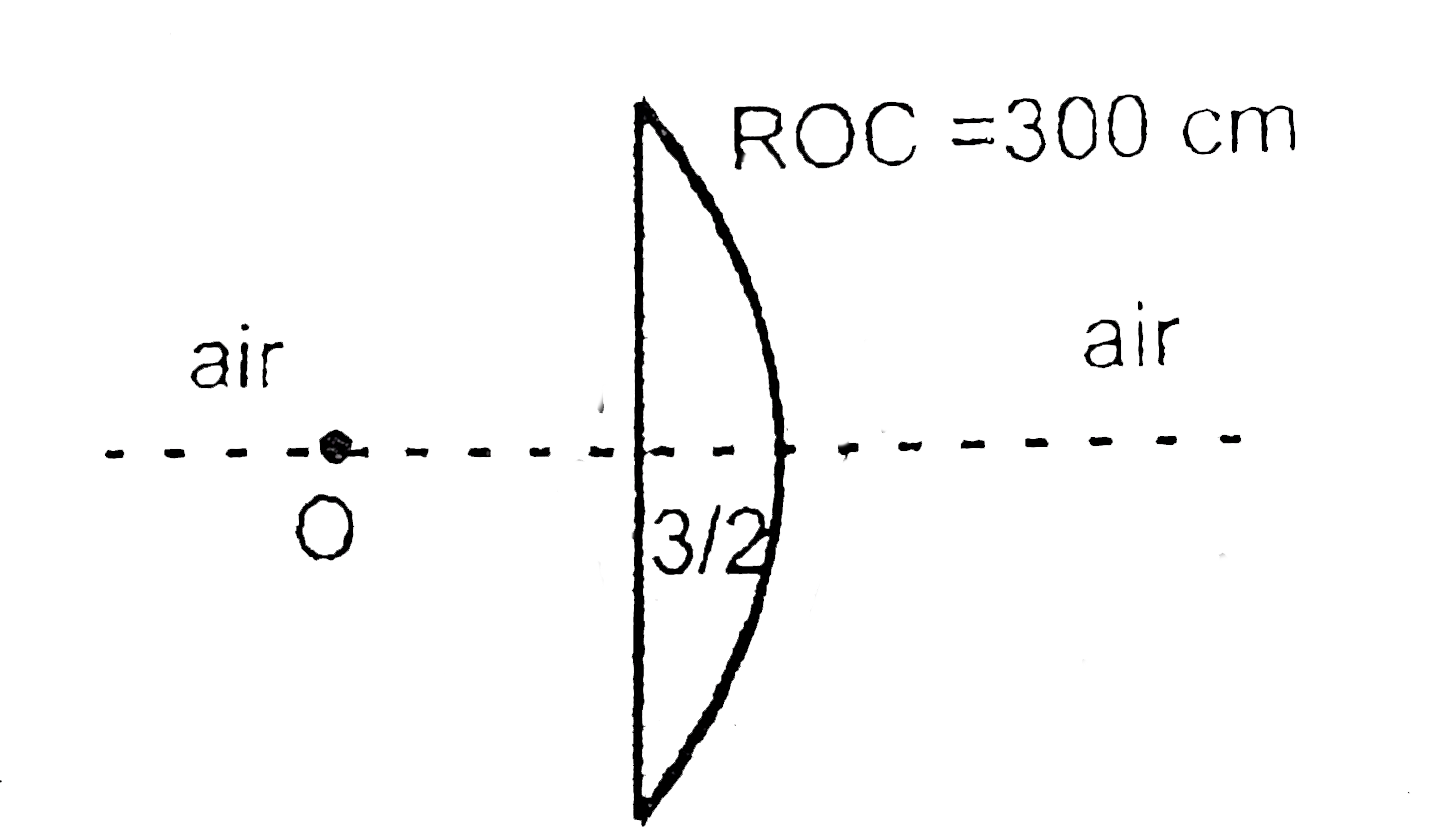
Plane surface of a thin planoconvex lens reflects 50% of light, while the curved surface is completely transparent, if final image of O after refraction through lens coinsides with the image formed due to partial reflection from plane surface. if distance (in m) between O and lens is x then find x/4
View SolutionA parallel beam falls on solid glass sphere of radius R and refractive index μ. What is the distance of final image after refractioin from two surfaces of sphere? What is the condition for the image to be real?
View SolutionA point object lies 30 cm above water on the axis of a convex mirror of focal length 40 cm lying 20 cm below water surface. Consider two images.
_E01_153_Q01.png)
(i) Image formed by the partial reflection from water surface.
(ii) Image formed by refraction from water surface followed by reflection from mirror and again refraction out of the water surface. find the distance between these two images.
View SolutionAt what distance eye E will observe the fourth image (after four refractions from plane surfaces) of object O from itself.
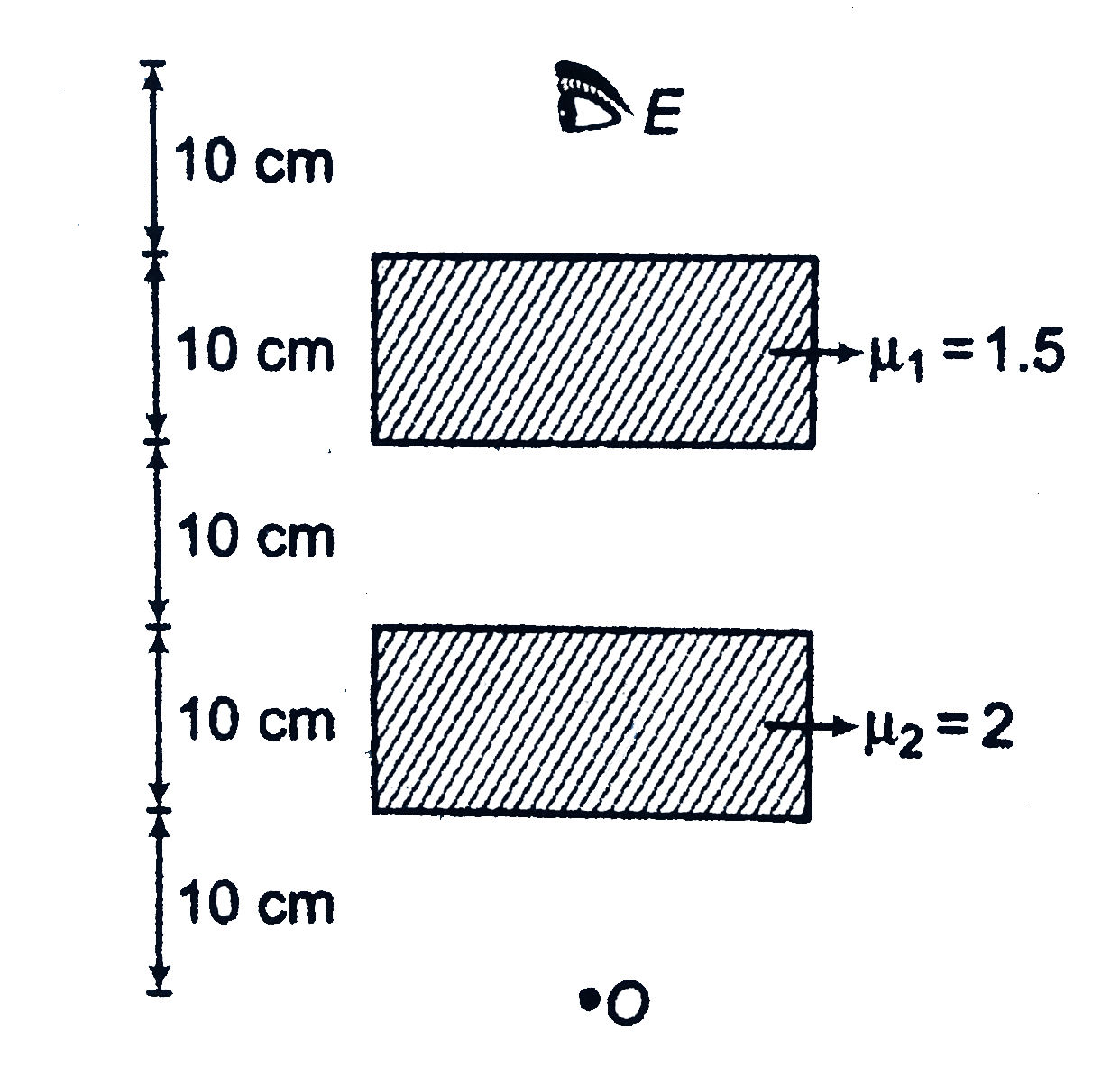
View SolutionThe refractive index of the material of a prism is √2 and the angle of the prism is 30∘. One of the two refracting surfaces of the prism is made a mirror inwards, by silver coating. A beam of monochromatic light entering the prism from the other face will retrace its path (after reflection from the silvered surface) if its angle of incidence on the prism is
View Solution